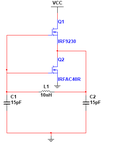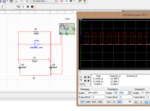julian403
Full Member level 5
p chanel jfet or mosfet (cmos half-bridge oscillator)
Hello, I'm looking for a fast p chanel jfet or mosfet which is on with a Vgs=0 and goes off with a Vgs>0. I'm looking it because i want fo do CMOS inverter to do an oscillator. I means the transistor must be in satiration state with Vgs=0.
Hello, I'm looking for a fast p chanel jfet or mosfet which is on with a Vgs=0 and goes off with a Vgs>0. I'm looking it because i want fo do CMOS inverter to do an oscillator. I means the transistor must be in satiration state with Vgs=0.


